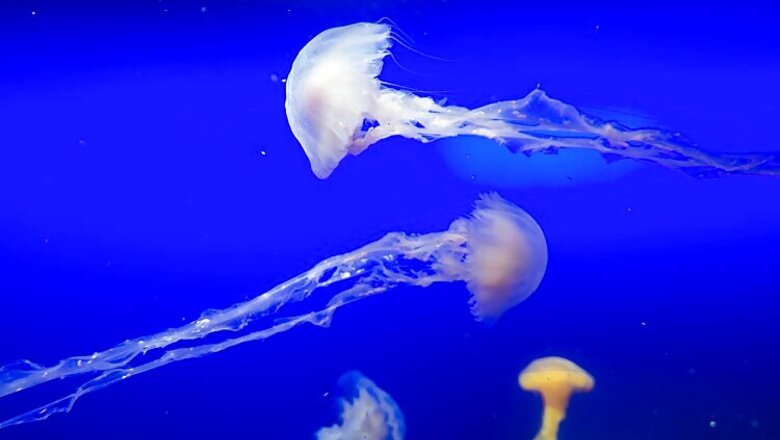
views
For the longest time, science has assumed that in order to run, swim, or fly, animals and humans must exert pressure on the ground, water or air around them to project themselves forward.
But a study of jellyfish and eels published Tuesday says the premise is false -- at least when it comes to certain swimming animals.
Rather than propelling themselves by pushing water rearward, jellyfish and lampreys -- a species of snake-like, jawless fish also known as lamprey eels -- "pull" themselves forward by creating a region of low pressure in the water directly ahead of them.
"The low pressure is created on the 'top' of the jellyfish's umbrella-shaped body, which is different from our previous understanding of their swimming dynamics that focused on the flow underneath the umbrella," study co-author John Dabiri of the University of Stanford told AFP.
"By measuring for the first time the pressure that swimming animals exert on the surrounding water, we have shown that the mechanism of efficient swimming is much different from conventional wisdom."
The finding, published in the journal Nature Communications, holds promise for designing much more energy-efficient submarines.
To date, said Dabiri, the focus in biomechanics and engineering studies has been on creating high pressure for propulsion, rather than low pressure.
"If the suction-based mechanism observed in animals can be translated to engineered vehicles, it could provide significant energy savings."
High pressure is generated by pushing liquid molecules together, through a sideways body motion for the lamprey, or by pushing water with his hands for a swimmer.
Low pressure can be created in various ways -- most commonly by rotating the body to create swirling vortices with low-pressure areas at their centre, said Dabiri.
This mechanism requires less energy to create propulsion than the high-pressure alternative, he added.
Evolutionary assumptions
Dabiri, an engineer, and a team of biologists made a close study of the motion of jellyfish and lampreys.
They studied them swimming through tunnels of water seeded with tiny glass beads to make the motion of the surrounding liquid easily visible. They used high-speed digital imagery to record "flow fields" around the fish, combined with computerised pressure measurements.
The team found that low-pressure regions dominated the balance of forces in the water around the fish.
The discovery could change some fundamental assumptions about animal evolution, said Dabiri.
"Animal motility is known to be important for determining the fitness of species and hence their capacity for survival," he explained.
"Prior to this work, the assumption... had been that generating high pressure is essential for achieving effective motility," and was thus a desired evolutionary adaptation.
Now it turns out that animals may have evolved for low-pressure designs instead.
Jellyfish and lampreys have among the most energy-efficient swimming motions of any animal.




















Comments
0 comment